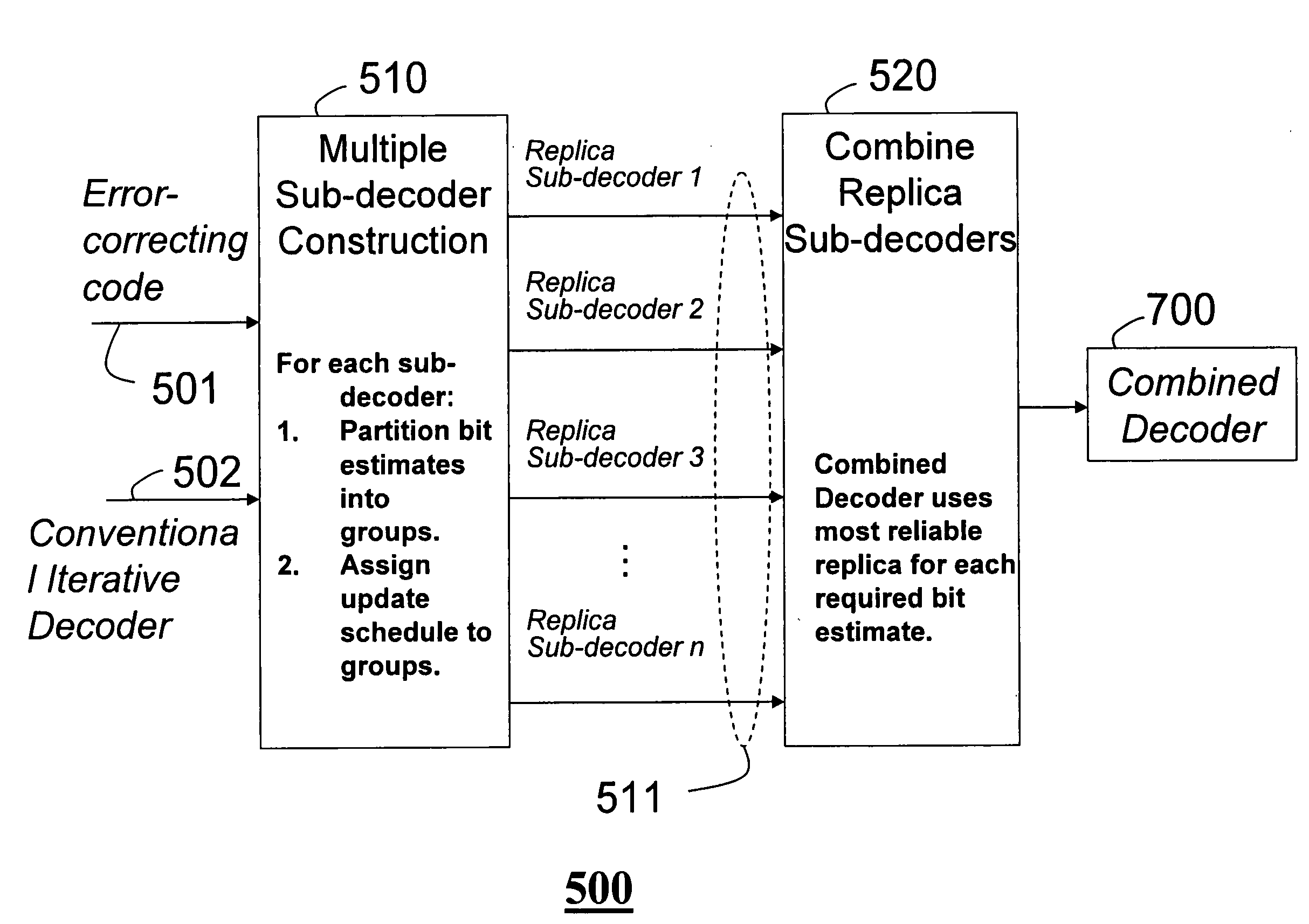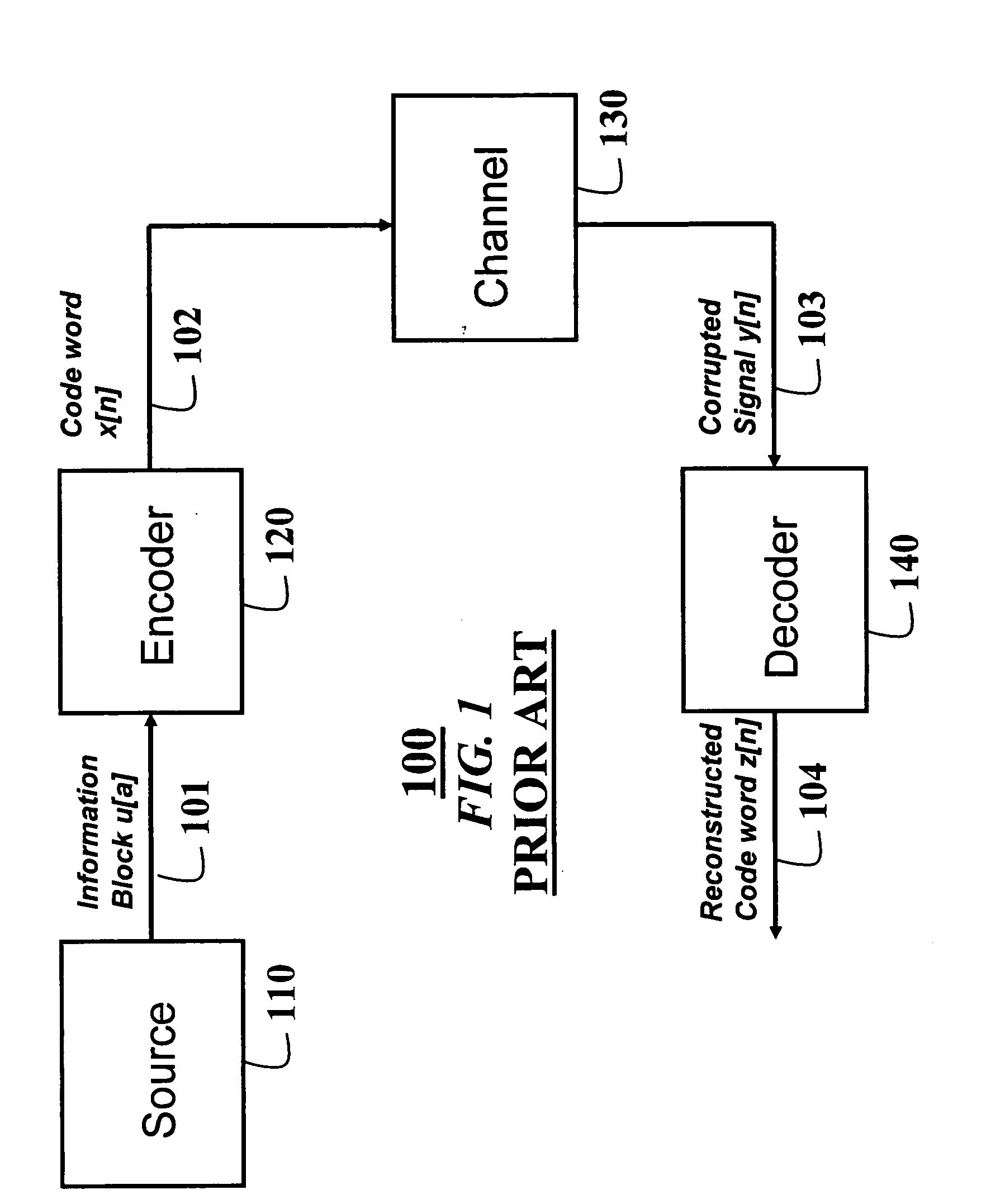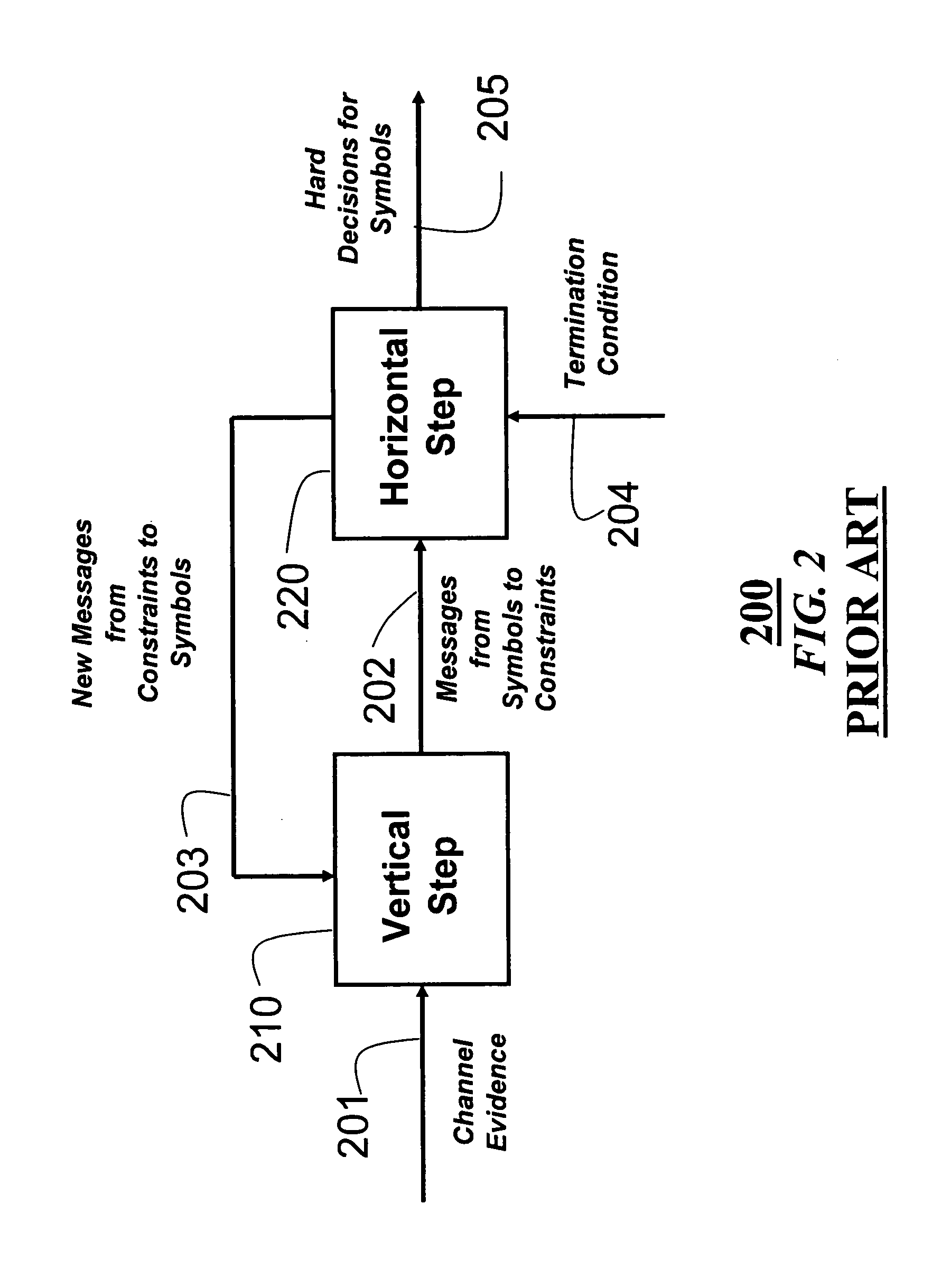Method and system for replica group-shuffled iterative decoding of quasi-cyclic low-density parity check codes
a code and code technology, applied in the field of iterative decoding of error-correcting codes, can solve the problems of speed of convergence of decoders, difficulty in decoding corrupted messages, and practicable decoding methods for error-correcting codes
- Summary
- Abstract
- Description
- Claims
- Application Information
AI Technical Summary
Problems solved by technology
Method used
Image
Examples
Embodiment Construction
[0078]FIG. 5 shows a method for generating 500 a combined-replica, group-shuffled, iterative decoder 700 according to our invention.
[0079]The method takes as input an error-correcting code 501 and a conventional iterative decoder 502 for the error-correcting code 501. The conventional iterative decoder 502 iteratively and in parallel updates estimates of states of symbols defining the code based on previous estimates. The symbols can be binary or taken from an arbitrary alphabet. Messages in belief propagation (BP) methods and states of bits in bit-flipping (BF) decoders are examples of what we refer to generically as “symbol estimates” or simply “estimates” for the states of symbols.
[0080]We also use the terminology of “bit estimates” because for simplicity the symbols are assumed to be binary, unless stated otherwise. However the approach also applies to other non binary codes. Prior-art BP decoders, BF decoders, turbo-decoders, and decoders for turbo product codes are all example...
PUM
 Login to View More
Login to View More Abstract
Description
Claims
Application Information
 Login to View More
Login to View More - R&D
- Intellectual Property
- Life Sciences
- Materials
- Tech Scout
- Unparalleled Data Quality
- Higher Quality Content
- 60% Fewer Hallucinations
Browse by: Latest US Patents, China's latest patents, Technical Efficacy Thesaurus, Application Domain, Technology Topic, Popular Technical Reports.
© 2025 PatSnap. All rights reserved.Legal|Privacy policy|Modern Slavery Act Transparency Statement|Sitemap|About US| Contact US: help@patsnap.com



